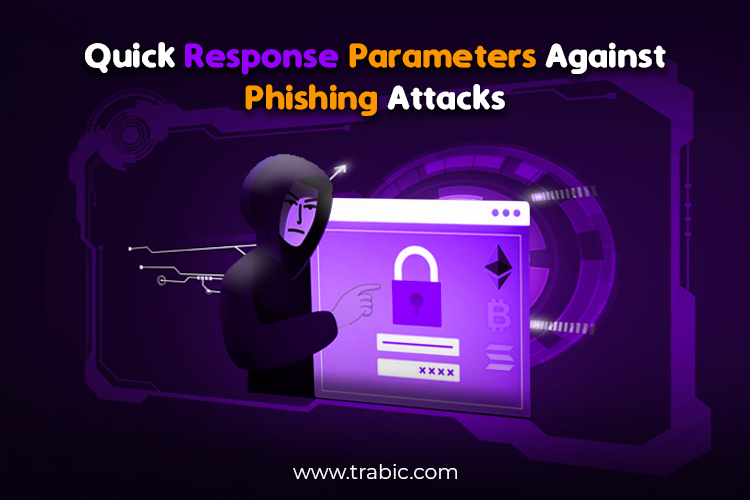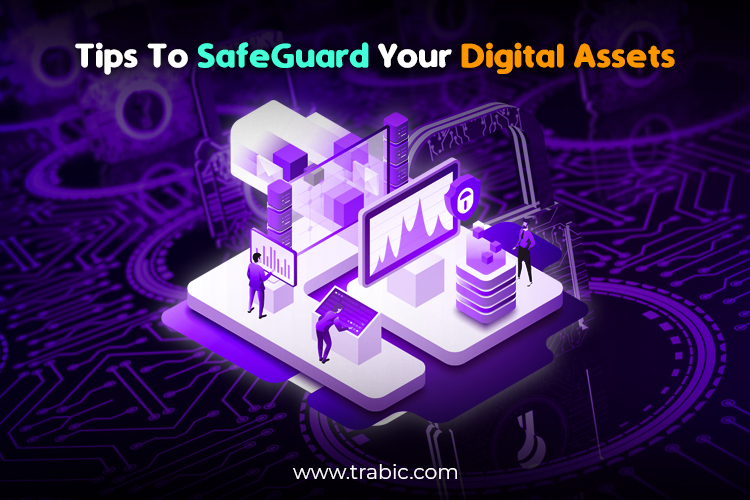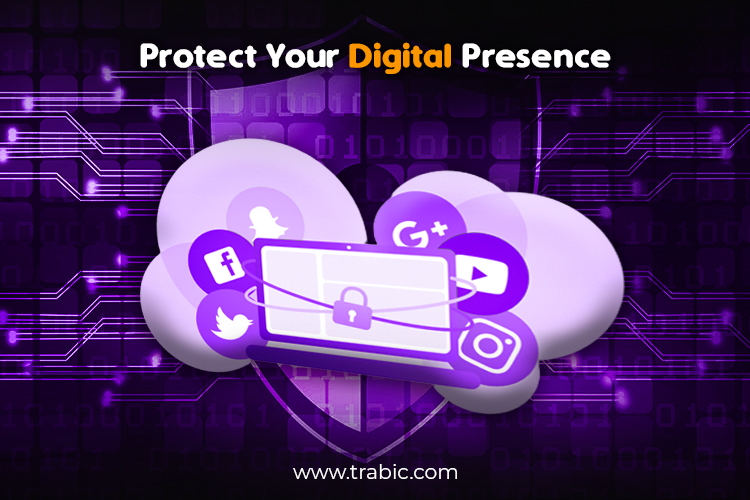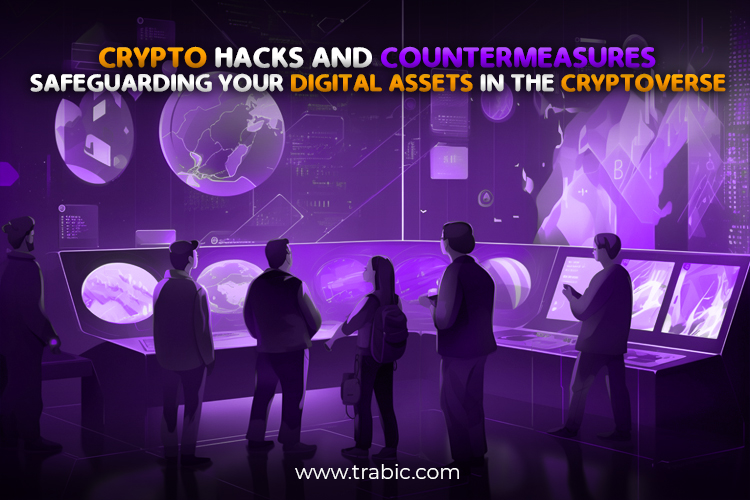Cryptocurrencies offer unprecedented financial freedom but present unique challenges when protecting digital assets. In this blog, we will explore the various types of crypto hacks, the reasons behind them, and most importantly, the countermeasures you can take to safeguard your valuable digital assets in the cryptoverse. As the popularity of cryptocurrencies rises, so does the risk of crypto hacks and security breaches.
Crypto hacks refer to unauthorized access, theft, or manipulation of cryptocurrencies and their associated platforms. These hacks can take various forms, including:
Phishing Attacks: In phishing attacks, hackers impersonate legitimate websites or platforms to trick users into revealing their private keys, passwords, or other sensitive information. Phishing attacks are cyber-attacks where hackers attempt to deceive individuals into revealing their sensitive information, such as passwords, private keys, or credit card details. The attackers typically masquerade as legitimate entities, such as banks, financial institutions, or cryptocurrency exchanges, to gain the trust of their targets.
Here’s how a typical phishing attack works:
- Deceptive Communication: The attacker initiates contact with the victim through various channels, including email, instant messaging, social media, or even phone calls. They often pose as a trusted organization or person, using official logos, email addresses, or website designs to create a sense of authenticity.
- Urgency and Social Engineering: Phishers often create a sense of urgency or fear to manipulate their targets. They may claim a security breach, account verification is needed, or urgent action is required to prevent a loss. By exploiting emotions and instilling a sense of urgency, they rush the victim into making impulsive decisions without verifying the request’s legitimacy.
- Fake Websites and Forms: Phishers create replica websites that closely resemble the legitimate ones they are impersonating. They often use similar domain names or subdomains to deceive users. Victims are directed to these fake websites through links in phishing emails or messages. Once on the fraudulent website, victims are prompted to enter their sensitive information, such as login credentials or private keys, into forms that appear legitimate but are controlled by the attackers.
- Harvesting Information: The phishers collect the data as victims unwittingly enter their sensitive information into fake forms. This information can then be used to gain unauthorized access to the victims’ accounts or conduct further fraudulent activities.
Countermeasures against Phishing Attacks:

- Be Skeptical: Exercise caution and be skeptical of unsolicited communications, especially those that create a sense of urgency or request sensitive information. Always verify the authenticity of the communication before taking any action.
- Double-Check URLs: Carefully examine the URL of any website you visit. Check for slight misspellings or variations that may indicate a fraudulent site. Be cautious of shortened URLs, as they can hide the true destination.
- Avoid Clicking Suspicious Links: Do not click on links sent through emails or messages, especially from unknown sources. Instead, manually type the URL of the website you wish to visit into your browser or use bookmarks you have previously saved.
- Verify Website Security: Ensure it is secure before entering sensitive information on a website. Look for “https://” at the beginning of the URL and a padlock symbol indicating a secure connection.
- Enable Two-Factor Authentication (2FA):Implement 2FA wherever conceivable to add a layer of security. If phishers obtain your password, they still need the second factor (e.g., a code generated on your mobile) to access your account.
- Educate Yourself: Stay informed about the latest phishing techniques and scams. Be aware of the common red flags and tactics used by phishers. Educate yourself on identifying phishing attempts and sharing this knowledge with others.
- Report Suspicious Activity: If you receive a phishing email or encounter a phishing website, report it to the appropriate authorities or the organization being impersonated. This helps remove fraudulent websites and raise awareness about ongoing phishing campaigns.
Remember, phishing attacks can be sophisticated and convincing. By remaining vigilant, practicing good online hygiene, and adopting preventive measures, you can protect yourself from phishing attacks and safeguard your digital assets in the cryptoverse.
- Exchange Hacks: Hackers often target Exchange platforms due to their centralization and many assets stored on their servers. Hackers exploit vulnerabilities in security systems to gain unauthorized access and steal digital assets.
- Malware Attacks: Malicious Software, such as keyloggers or screen recorders, can compromise the security of your device and steal sensitive information like private keys or passwords.
- Ponzi Schemes and Scams: Scammers often promote fraudulent investment schemes or projects, promising unrealistic returns, to trick individuals into sending their cryptocurrencies to their wallets.
- Smart Contract Exploits: Smart contracts are self-executing agreements on blockchain platforms. If a flaw exists within the code, hackers can exploit it to drain funds or manipulate transactions.
Countermeasures to Protect Your Digital Assets:

While the risks associated with crypto hacks cannot be eliminated, there are several countermeasures you can implement to enhance the security of your digital assets significantly:
- Choose Strong Passwords: Create complex and unique passwords for crypto wallets and exchange accounts. Avoid using common phrases or easily guessable information. Consider using a password to save your passwords safely.
- Enable Two-Factor Authentication (2FA):Enable 2FA for all crypto-related accounts. This adds an extra coating of security by requiring a second type of verification, usually through a mobile app or SMS code, in addition to your password.
- Be Cautious of Phishing Attempts: Be vigilant against phishing attempts by carefully verifying website URLs, email addresses, and communication channels. Avoid clicking on suspicious links; never share your private keys or sensitive information with anyone.
- SecureYour Devices: Regularly update your operating systems and antivirus software. Be cautious when downloading files or apps from unknown sources, as they may contain malware.
- Use Hardware Wallets: Consider using a hardware wallet, a physical device that securely stores your private keys offline. Hardware wallets provide an additional layer of protection against online threats.
- Diversify Your Storage:Avoid storing all digital assets in a single location or exchange platform. Diversify your storage across multiple wallets and platforms to minimize the risk of losing all your funds in a single hack.
- Stay up to date:Keep up-to-date with the recent news and developments in the crypto space. Stay informed about potential security vulnerabilities and take appropriate actions to mitigate risks.
- Conduct Due Diligence: Before giving in to a cryptocurrency project or participating in an Initial Coin Offering (ICO), conduct thorough research to ensure its legitimacy and security features.
- Consider Insurance: Some platforms and services offer insurance coverage for digital assets. Consider using such platforms that provide additional protection against losses due to hacks or security breaches.
- Regularly Backup Your Wallets: Create regular backups of your cryptocurrency wallets and store them securely offline or on encrypted storage devices. This ensures you can recover your funds even if your device is lost or compromised.
- Keep Software Up to Date: Keep your wallet software, blockchain clients, and other cryptocurrency-related applications up to date. Software updates often involve security patches and bug fixes that help protect against known vulnerabilities.
- Utilize Multi-Signature Wallets: Consider using multi-signature wallets requiring multiple private key signatures to authorize transactions. This adds an extra coating of security and reduces the risk of unauthorized access or theft.
- Employ Cold Storage Solutions: Cold storage refers to storing your digital assets offline, away from internet-connected devices. Cold storage options include hardware wallets, paper wallets, or dedicated offline computers. Keeping your assets offline greatly minimizes the risk of remote hacking.
- Perform Due Diligence on Exchanges: Before choosing a cryptocurrency exchange, research its reputation, security measures, and history of past security incidents. Opt for well-established exchanges with a strong security and regulatory compliance track record.
- Be Mindful of Public Wi-Fi:Avoid accessing your cryptocurrency accounts or performing transactions when connected to public Wi-Fi networks. These networks are often insecure, and hackers could intercept your data.
- Practice the “Need to Know” Principle: Limit the information you share about your cryptocurrency holdings and transactions. The fewer people are aware of your digital assets, the lower the risk of targeted attacks.
- Regularly Monitor Account Activity: Keep a close eye on your cryptocurrency accounts and transaction history. Set up notifications or alerts to notify you of suspicious activity, such as unexpected withdrawals or login attempts.
- Educate Yourself: Continuously educate yourself about best practices for cryptocurrency security. Stay informed about new hacking techniques and emerging security trends. Participate in online forums or communities where you can learn from experienced cryptocurrency enthusiasts.
Consider Anonymity: You can explore privacy-focused cryptocurrencies with enhanced anonymity features depending on your goals and preferences. These can help protect your identity and transaction history from prying eyes.
Considering anonymity is an important aspect of protecting your privacy and enhancing security in the digital realm. Anonymity in the context of the cryptoverse refers to measures taken to conceal or minimize the traceability of your identity and transactions. While not everyone requires or desires complete anonymity, it can be beneficial in some situations. Here’s an explanation of considering anonymity in the cryptoverse:
- Privacy Protection: Anonymity helps protect your personal information and financial transactions from being easily linked to your real-world identity. It prevents malicious actors from tracking and exploiting your digital footprint, reducing the risk of targeted attacks or identity theft.
- Transaction Confidentiality: Cryptocurrencies are often touted for their pseudonymous nature. However, the public nature of blockchain transactions means that transaction histories can be analyzed and linked to individuals or addresses. By considering anonymity, you can protect the privacy of your transactions and prevent others from easily tracing the flow of funds.
- Financial Security: Anonymity can enhance financial security by reducing the risk of targeted attacks, such as phishing attempts or social engineering, that may result from public exposure to your cryptocurrency holdings. It can also mitigate the risk of physical theft or extortion attempts based on knowledge of your digital assets.
- Protection Against Surveillance: In some cases, individuals may be concerned about government surveillance, corporate tracking, or invasive data collection practices. Anonymity measures can protect against mass surveillance, ensuring that your online activities remain private and your financial decisions are shielded from unwanted scrutiny.
- Anti-Censorship and Freedom of Speech: Anonymity can be crucial for individuals living in repressive regimes or engaging in sensitive discussions. By masking their identities, they can express opinions and engage in activities without fear of reprisal or censorship.
- Enhanced Security Against Doxxing: Doxxing refers to the malicious act of revealing an individual’s personal information online to harm or harass them. Maintaining anonymity reduces the risk of being doxxed and the associated consequences.
- Protecting Business and Financial Strategies: Anonymity can be necessary for businesses, entrepreneurs, and investors who want to safeguard their trade secrets, financial strategies, or proprietary information. Keeping their identities and activities anonymous reduces the risk of competitors gaining an advantage or potential adversaries targeting them.
It’s important to note that achieving complete anonymity can be challenging, as even the most privacy-focused cryptocurrencies have certain limitations. However, several measures can help enhance anonymity, such as using privacy-oriented cryptocurrencies, employing mixing services or CoinJoin protocols, utilizing anonymous communication tools like Tor, and avoiding unnecessary sharing of personal information online.
It’s essential to weigh the benefits and considerations of anonymity in the context of your specific needs and legal obligations. Balancing privacy, security, and compliance is crucial to ensure a responsible and informed approach to anonymity in the cryptoverse.
Secure Your Social Media Presence:

Be cautious about sharing sensitive information about your crypto holdings on social media platforms. Cybercriminals often scour these platforms for potential targets. Avoid revealing too much about your investments or personal details that can be exploited.
Securing your social media presence is crucial in safeguarding your digital assets and personal information. Hackers and scammers often target social media platforms due to the vast amount of personal data shared on these platforms. Here are some steps to help you secure your social media presence:
- Use Strong, Unique Passwords: Choose strong, complex passwords for your social media accounts. Avoid using common passwords or reusing passwords across multiple platforms. Consider using a password to make and save unique passwords securely.
- Enable Two-Factor Authentication (2FA):Enable 2FA on your social media accounts whenever possible. This adds an extra coating of security by requiring a second verification step, such as a unique code sent to your mobile set in addition to your password.
- Be Mindful of Privacy Settings:Review and adjust your privacy sets on social media platforms to ensure you have control over who can see your posts, personal information, and contact details. Limit the visibility of your posts to trusted connections rather than making them public.
- Be Cautious of Accepting Friend Requests: Only accept friend or connection requests from individuals you know and trust. Be wary of requests from unknown or suspicious accounts, as they may be attempting to gather personal information or gain unauthorized access to your account.
- Think Before Sharing Personal Information: Be cautious about your personal information on social media. Avoid sharing sensitive data such as your home address, phone number, or financial information. Think twice before sharing information that could be used to impersonate you or compromise your security.
- Be Wary of Clicking on Links: Avoid clicking on suspicious links shared on social media platforms, especially if they come from unknown sources or seem too good to be true. These links may lead to phishing websites or malware-infected content.
- Regularly Review App Permissions: Periodically review the permissions granted to third-party apps or services connected to your social media accounts. Revoke access for any apps or services you no longer use or trust.
- Keep Your Devices Secure: Ensure your devices to access social media platforms, like smartphones, tablets, or computers, have up-to-date security measures. Keep your operating systems, apps, and antivirus software updated to protect against known vulnerabilities.
- Be Cautious of Public Wi-Fi:Avoid accessing your social media accounts or sharing sensitive information while connected to public Wi-Fi networks. Public networks can be insecure, making it easier for hackers to intercept your data.
- Regularly Monitor Account Activity: Keep an eye on the activity on your social media accounts. Report any suspicious or unauthorized access immediately to the crypto platform’s support team and take appropriate measures to secure your account.
- Educate Yourself on Social EngineeringTactics: Stay informed about social engineering techniques scammers use to trick individuals into revealing personal information or gaining access to accounts. Be skeptical of unsolicited messages or requests for personal information.
By implementing these additional points alongside the previously mentioned countermeasures, you can significantly enhance the security of your digital assets in the cryptoverse. Remember, proactive measures and a cautious approach are vital to safeguarding your cryptocurrencies and ensuring a secure and enjoyable crypto experience.
Conclusion
As cryptocurrencies gain mainstream adoption, it becomes increasingly important to prioritize the security of your digital assets. Implementing the abovementioned countermeasures and staying vigilant can reduce the risk of falling victim to crypto hacks. Remember, the cryptoverse offers immense opportunities, but you are responsible for safeguarding your digital assets and protecting yourself from potential threats.
In conclusion, safeguarding your digital assets in the cryptoverse requires a proactive and vigilant approach to security. Crypto hacks and security breaches pose significant risks, but implementing the right countermeasures can minimize the likelihood of falling victim to such attacks. This blog discussed various crypto hacks and provided valuable insights into protecting digital assets. Here are the key takeaways:
- Understand crypto hacks, including phishing attacks, exchange hacks, malware attacks, Ponzi schemes, and smart contract exploits.
- Implement countermeasures such as using strong passwords, enabling two-factor authentication (2FA), being cautious of phishing attempts, securing your devices, and utilizing hardware wallets.
- Diversify your storage across multiple wallets and platforms, stay informed about the recent developments in the crypto space, and conduct due diligence before engaging in cryptocurrency investments or projects.
- Consider additional measures like regular backups, keeping Software up to date, utilizing multi-signature wallets, employing cold storage solutions, and securing your social media presence.
- Educate yourself about phishing attacks, practice skepticism, and report mistrustful activity to the appropriate authorities.
- Anonymity can provide added privacy and security, protecting your personal information, financial transactions, and freedom of speech. Consider anonymity measures based on your specific needs and legal obligations.
Remember, the cryptoverse offers immense opportunities but demands responsible security practices. By implementing these measures, staying informed, and maintaining a cautious mindset, you can safeguard your digital assets and enjoy a more secure cryptocurrency experience.
